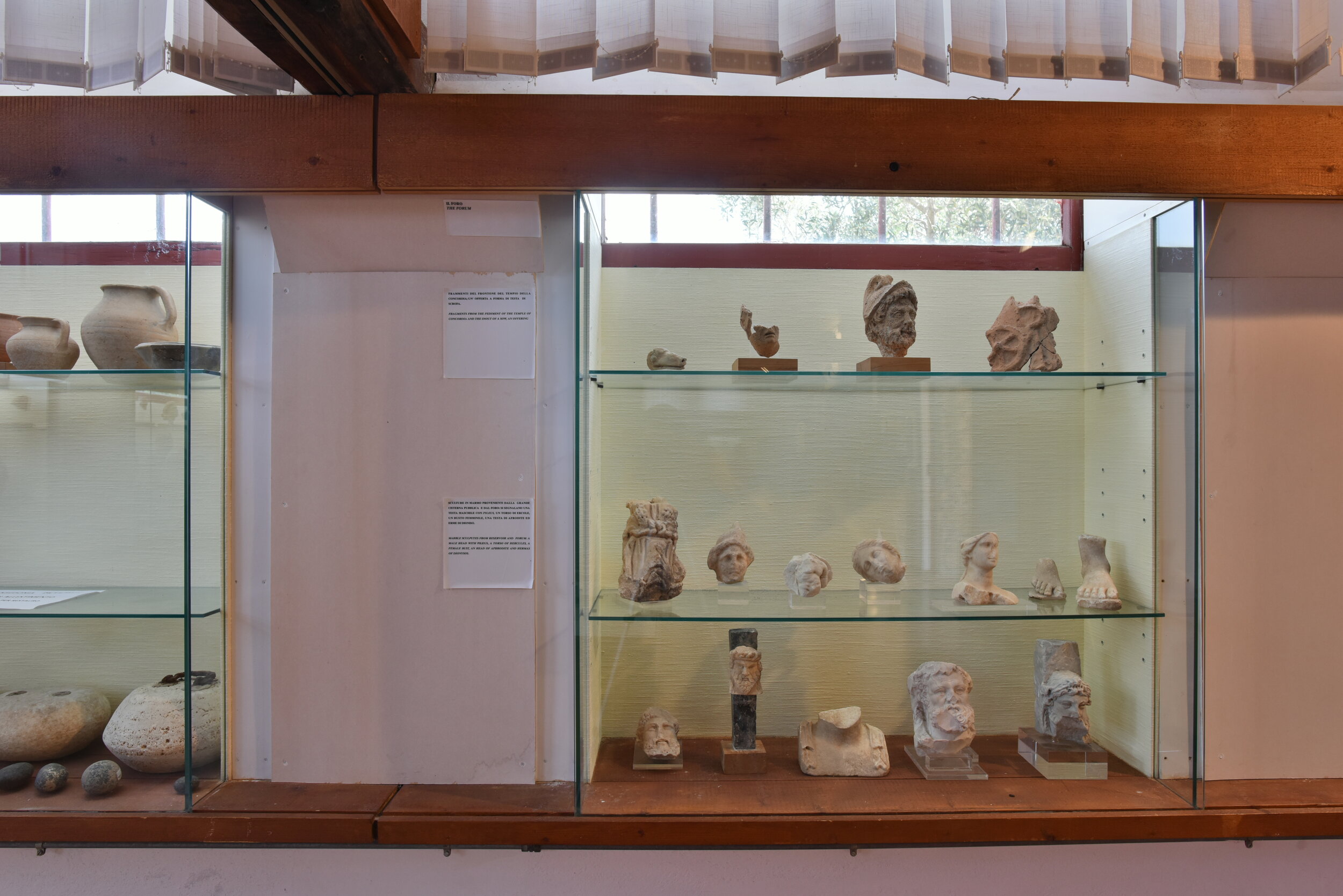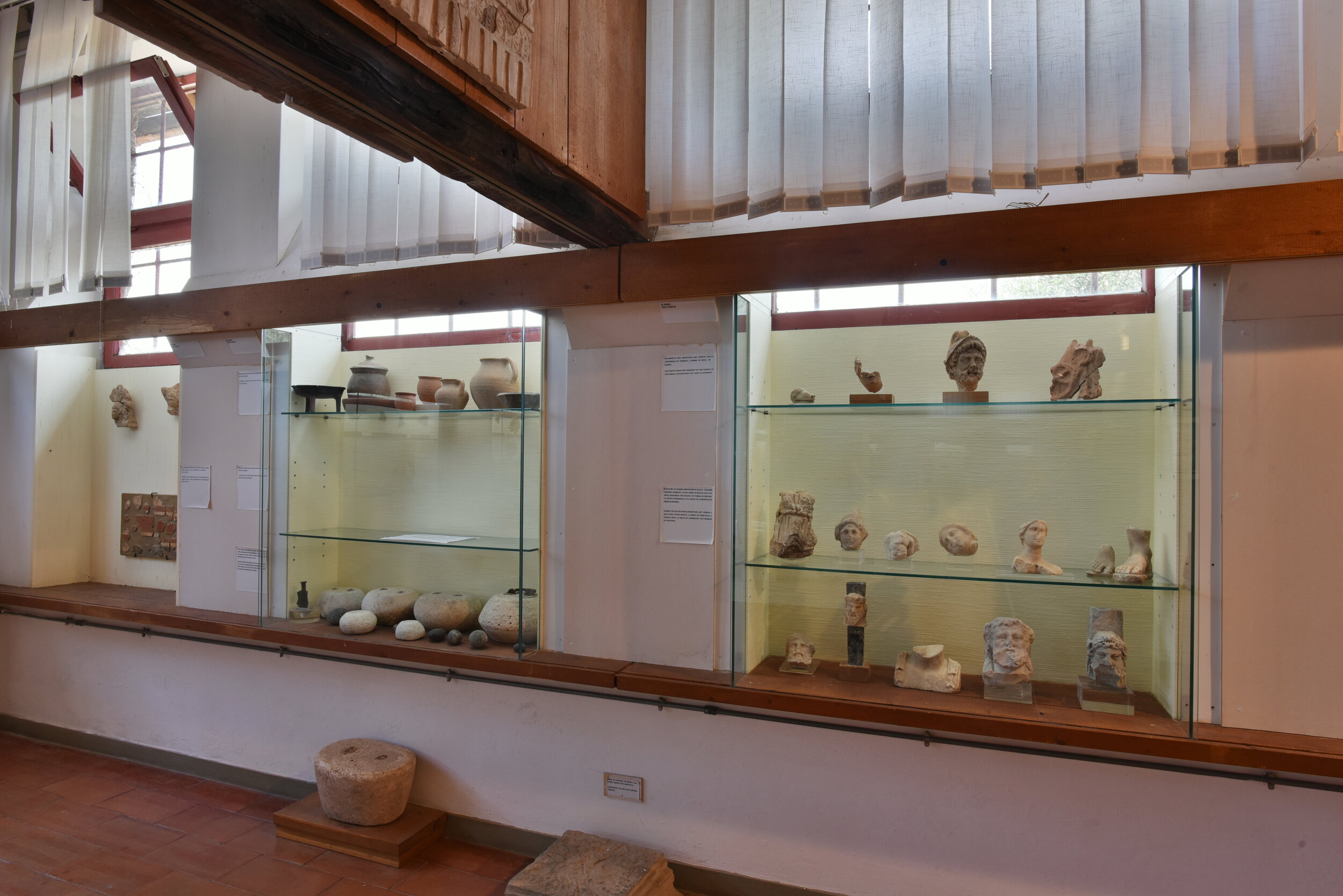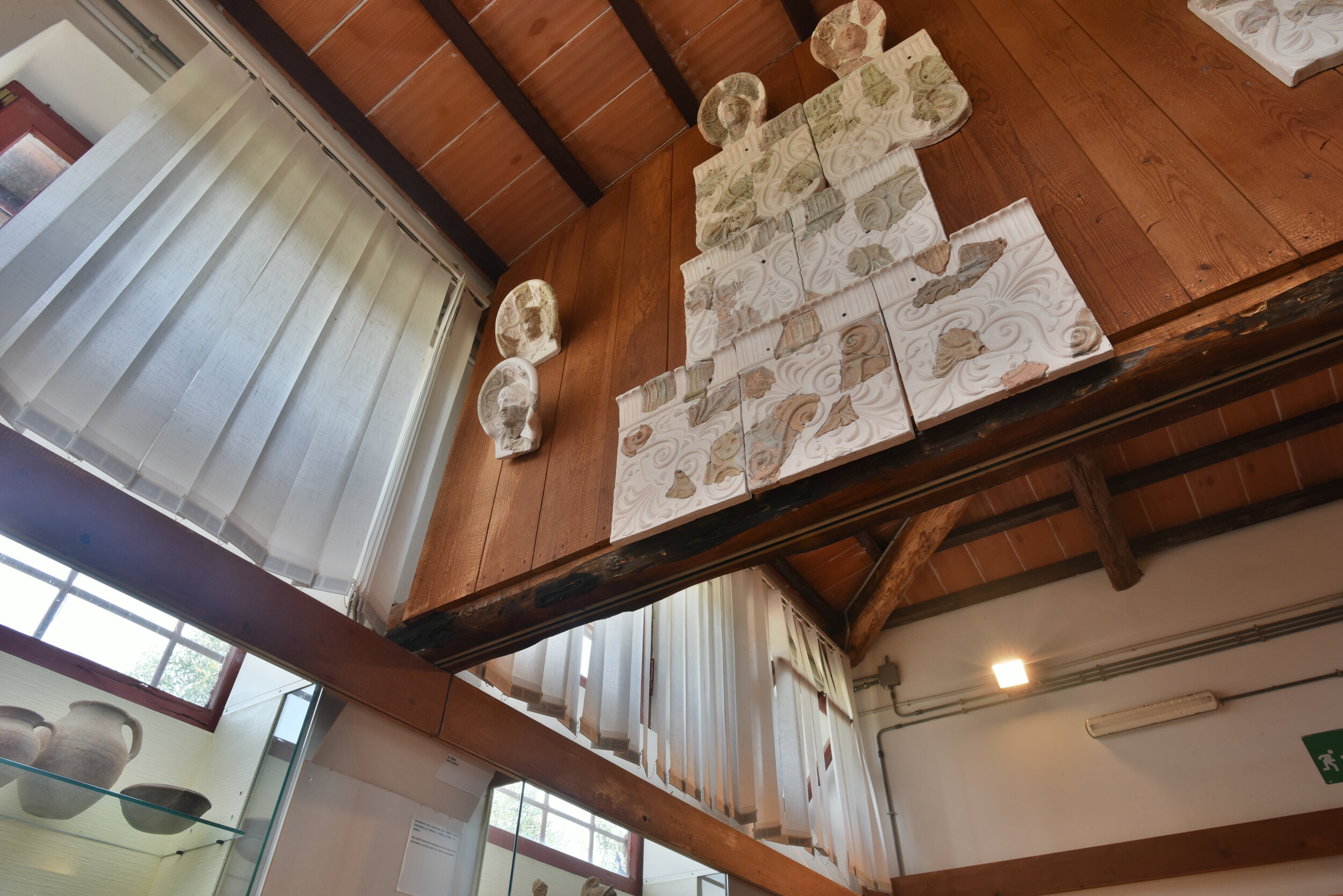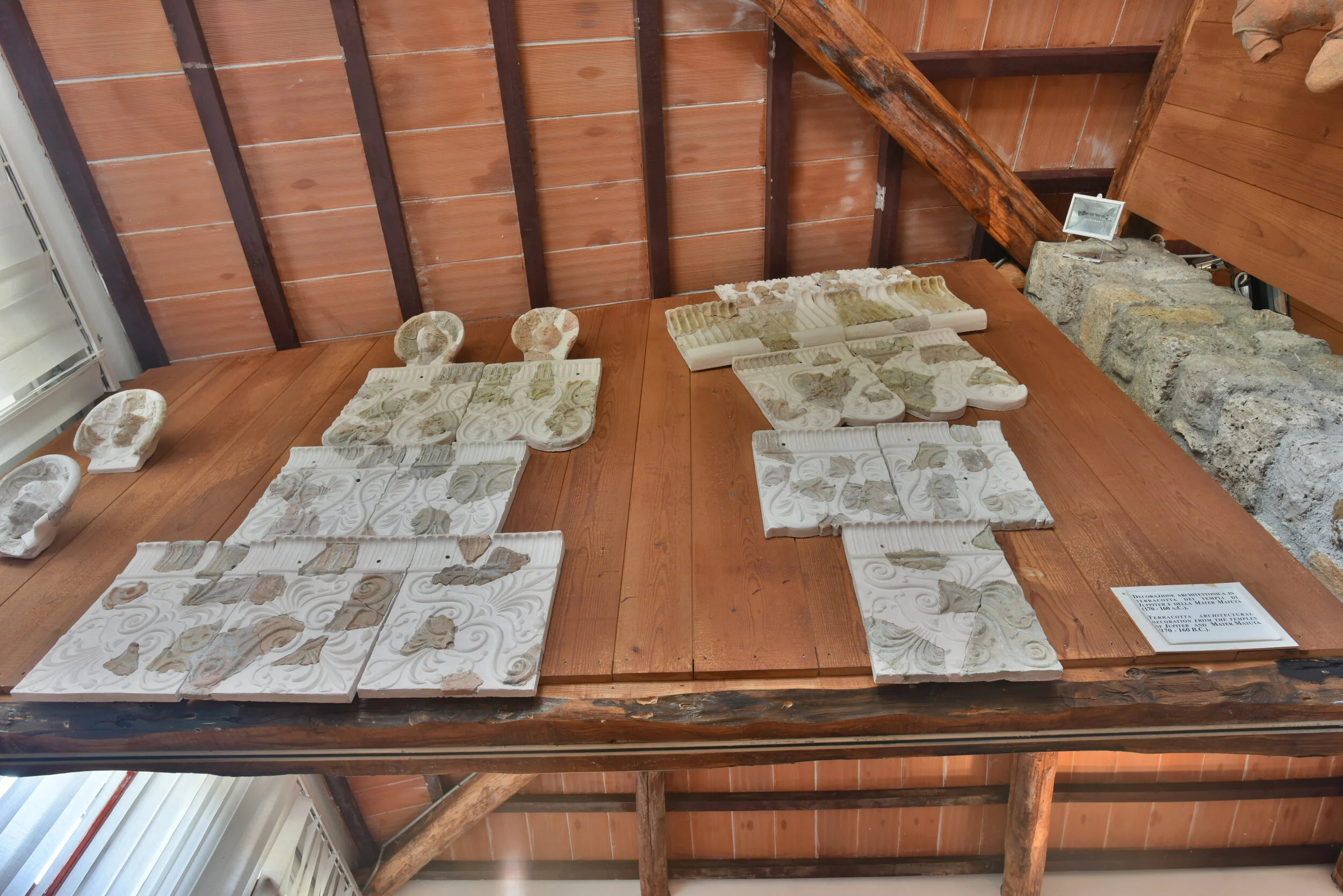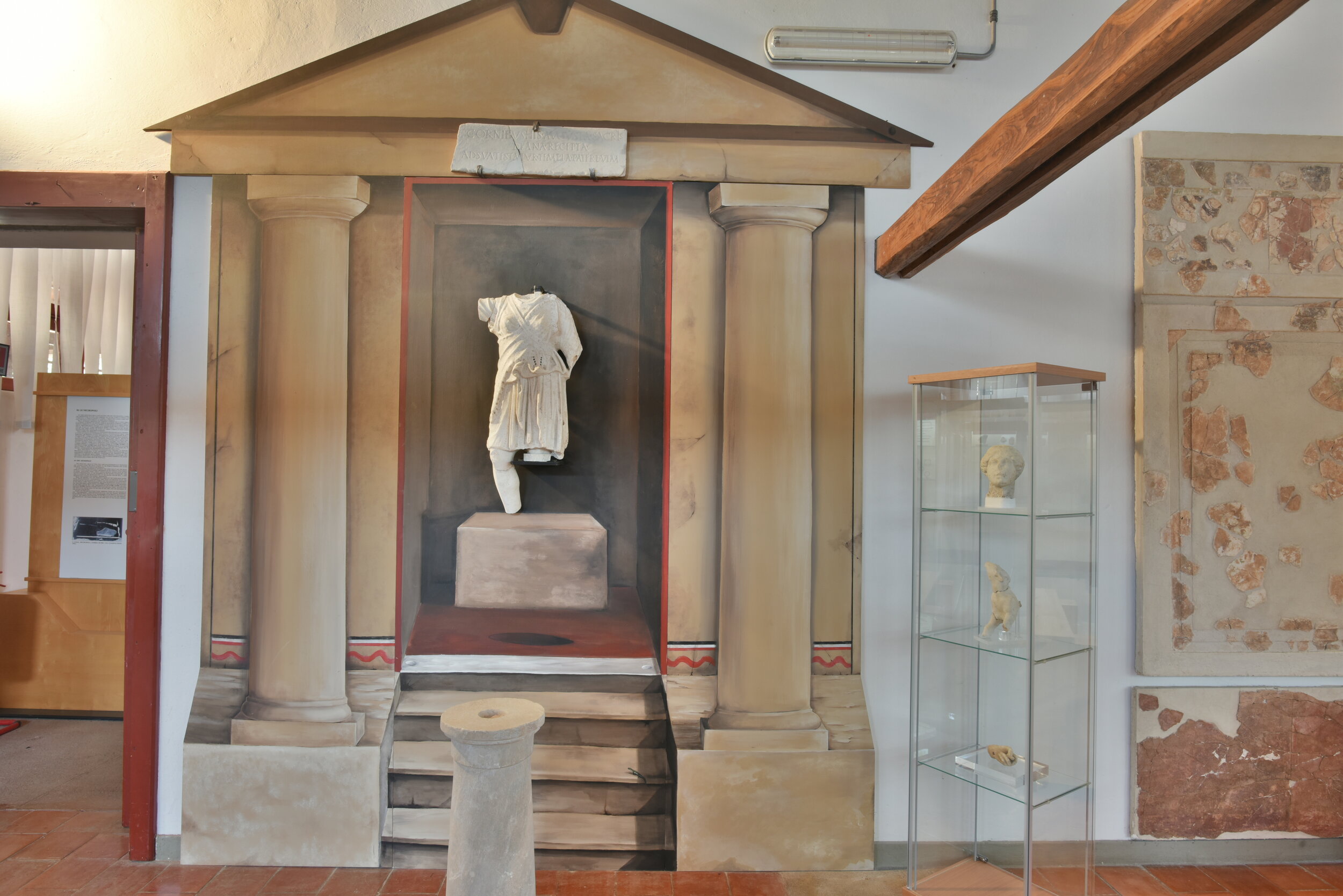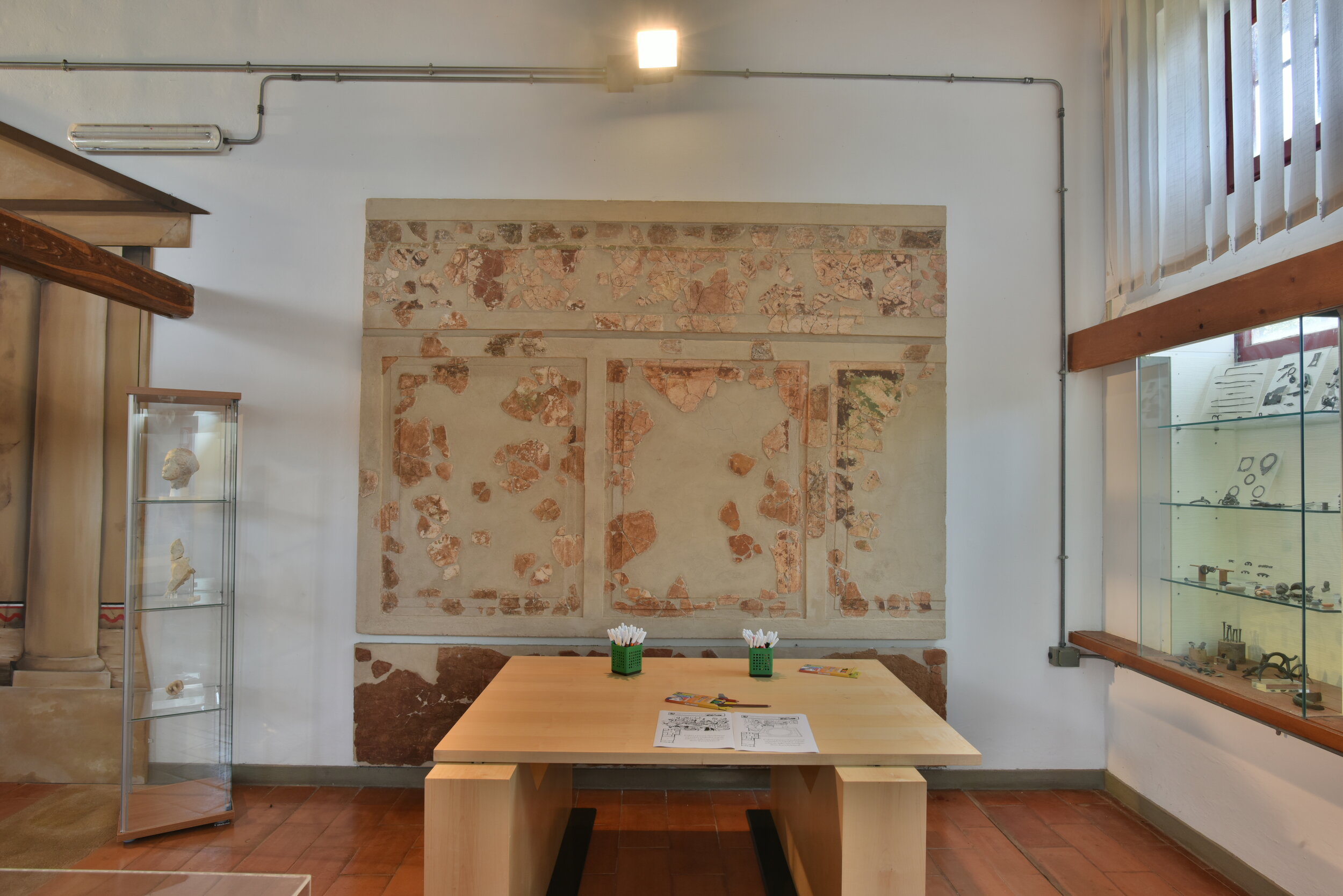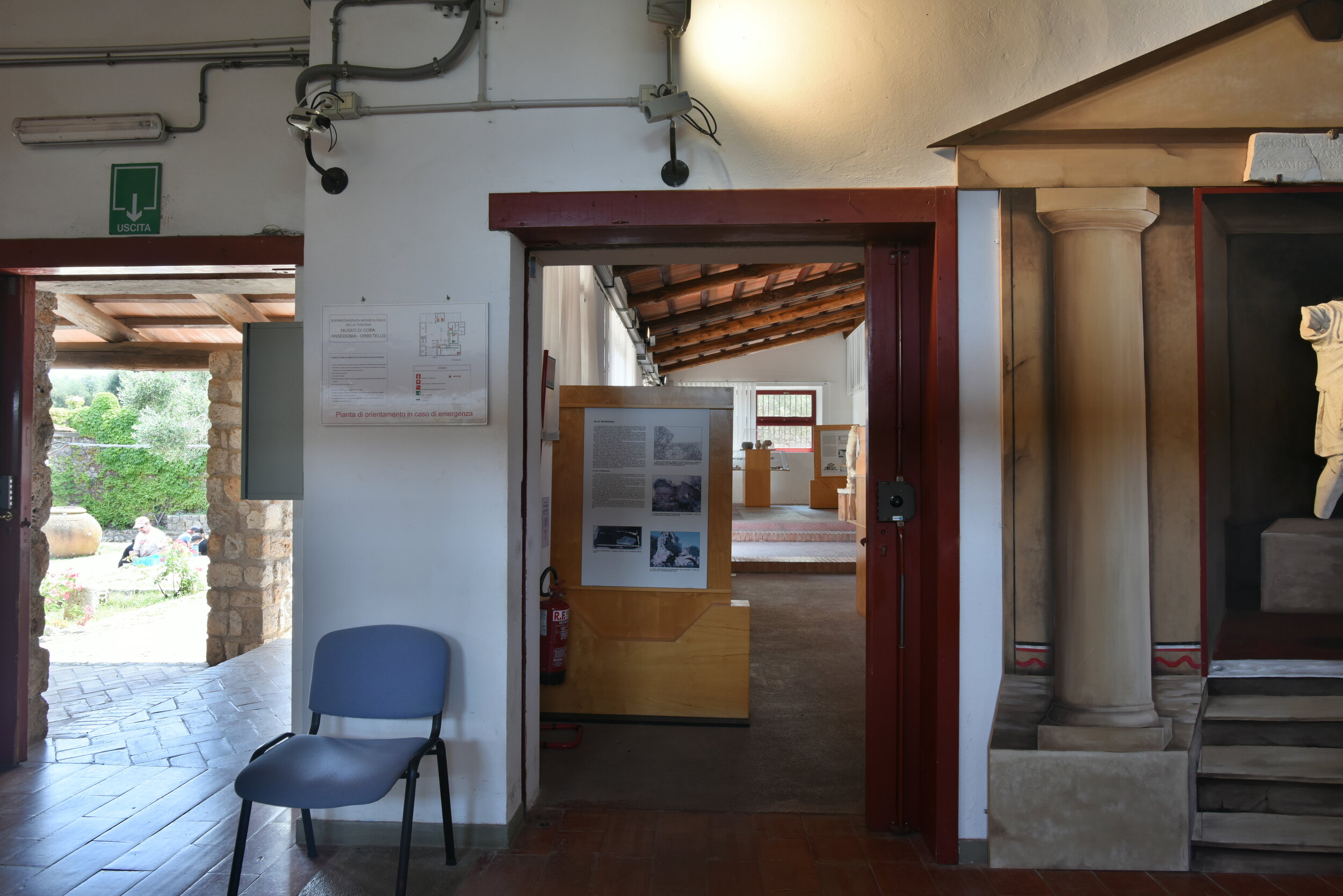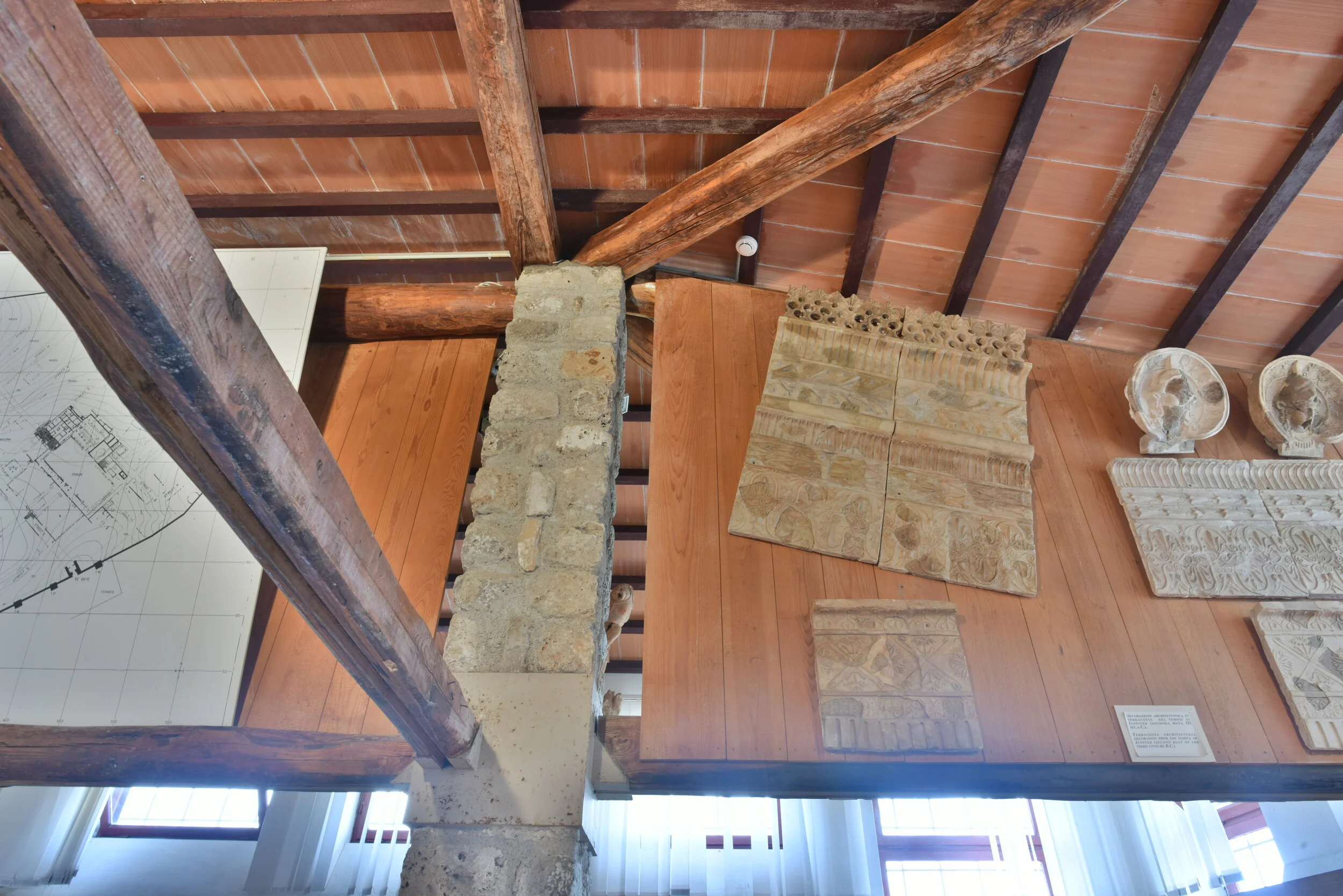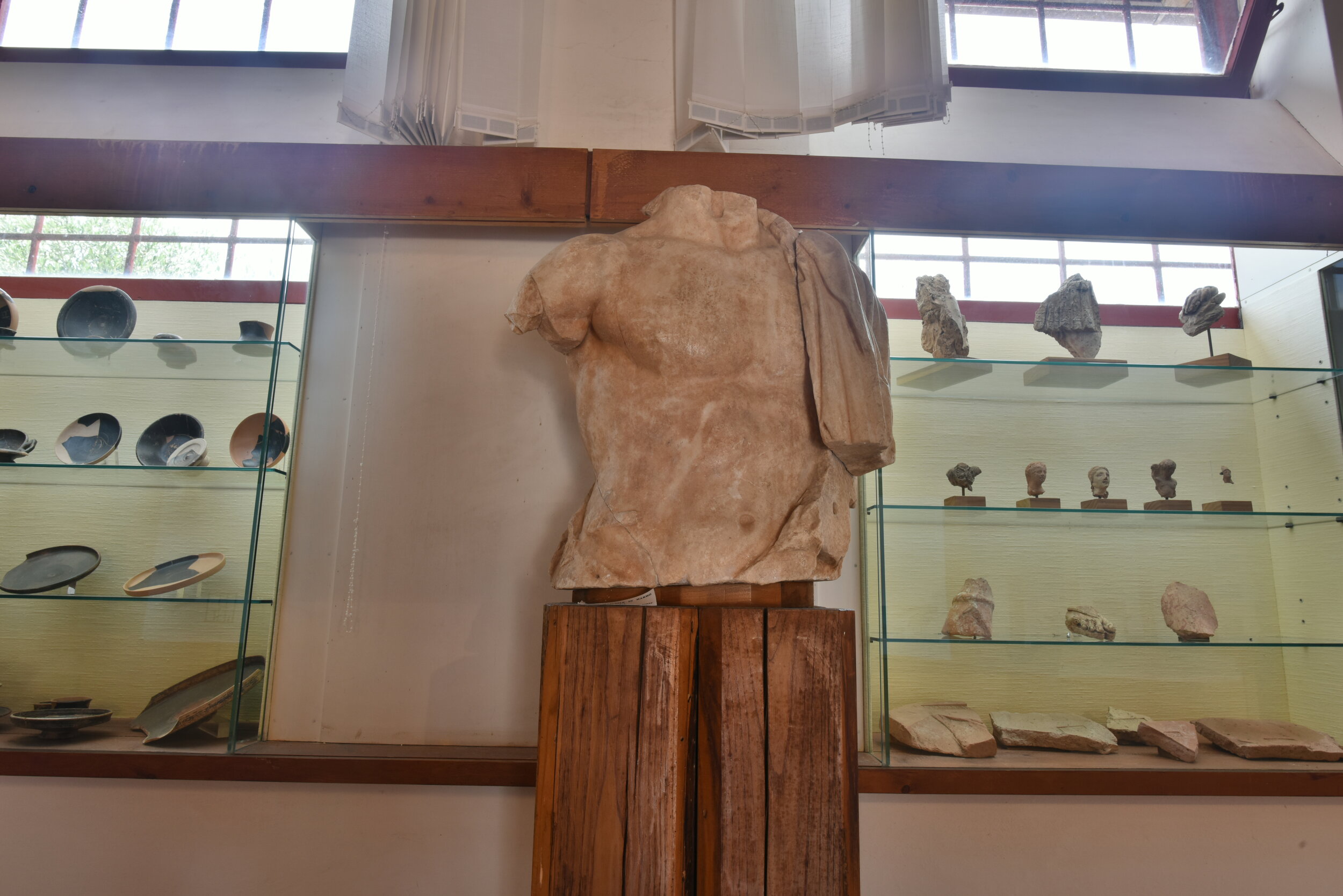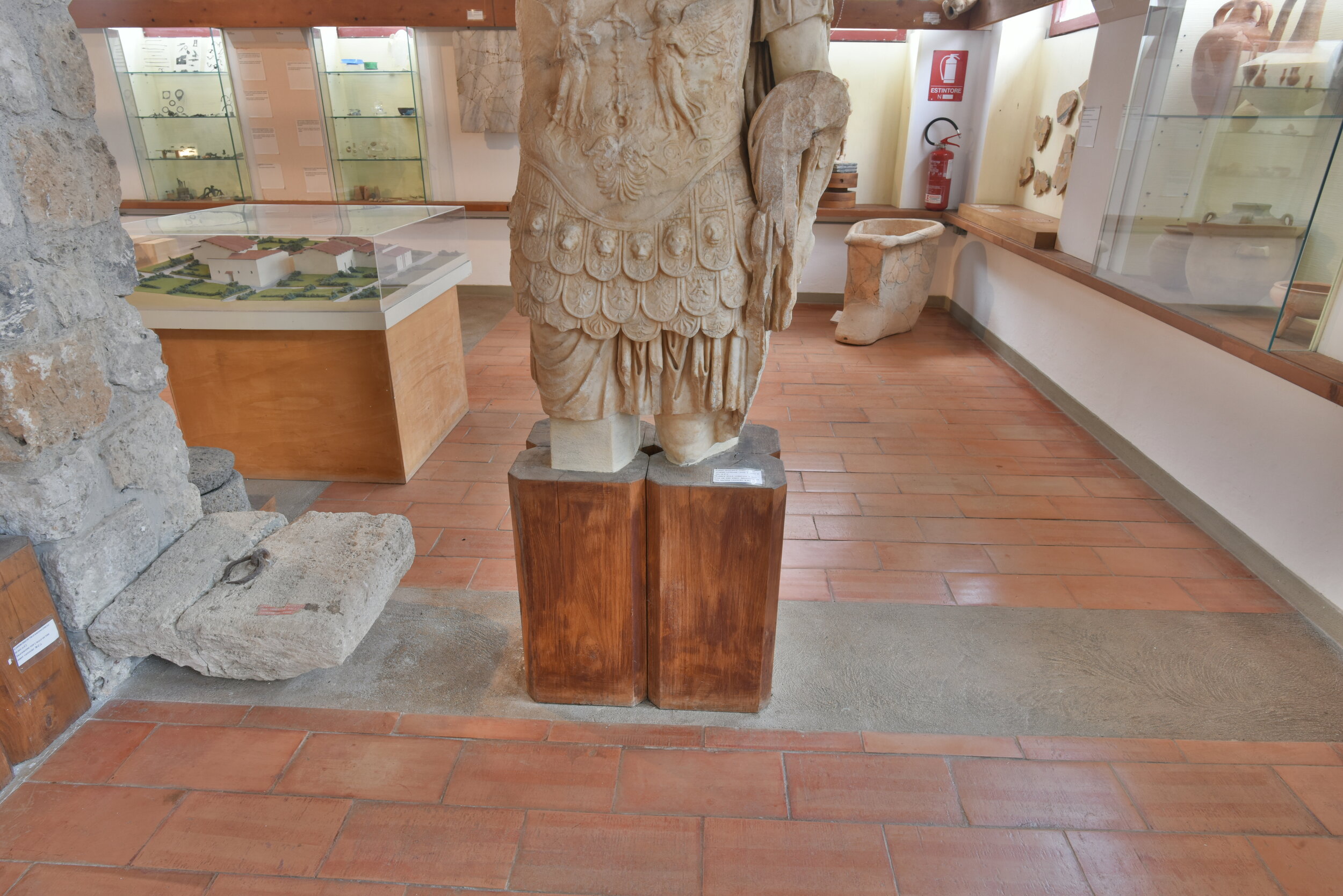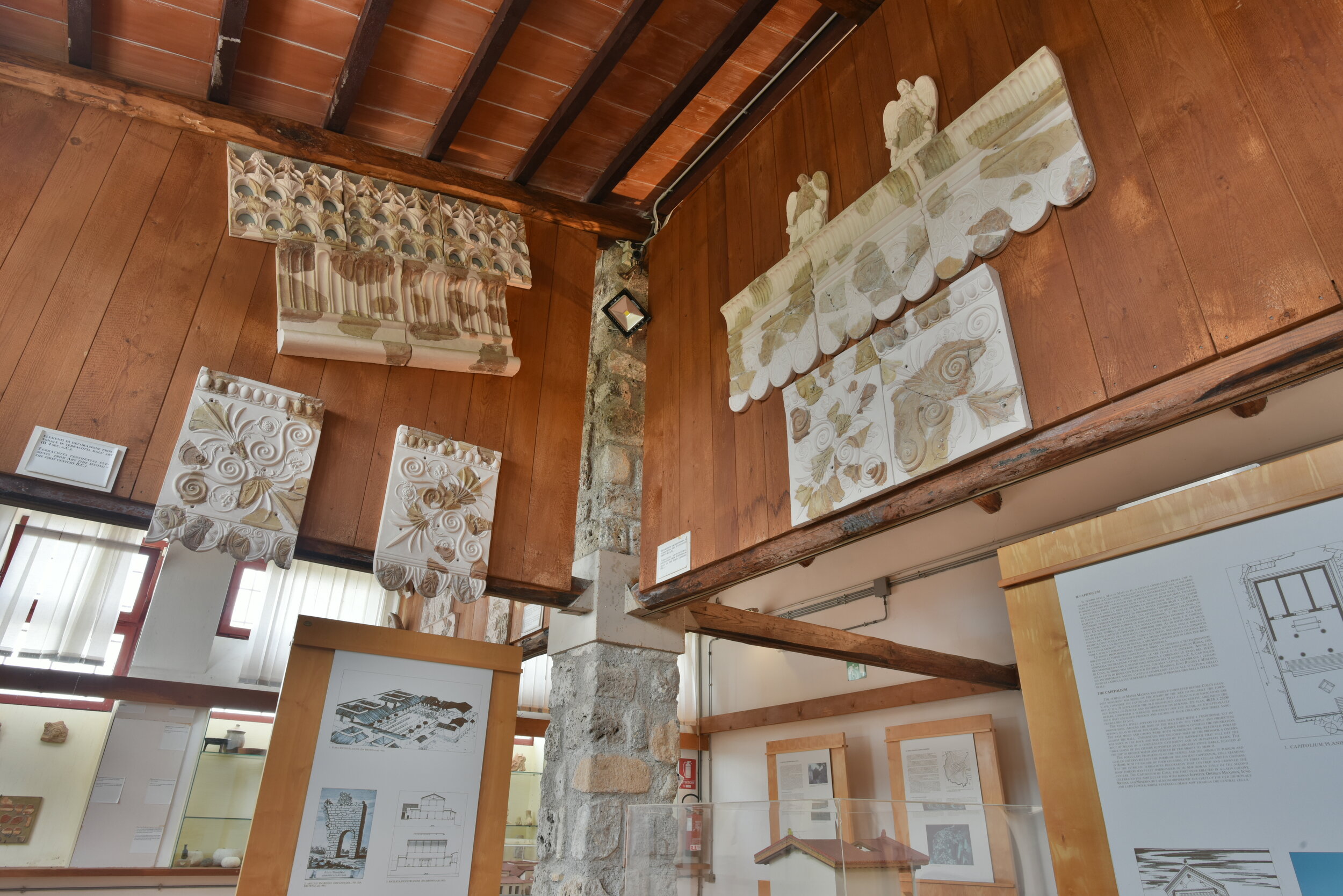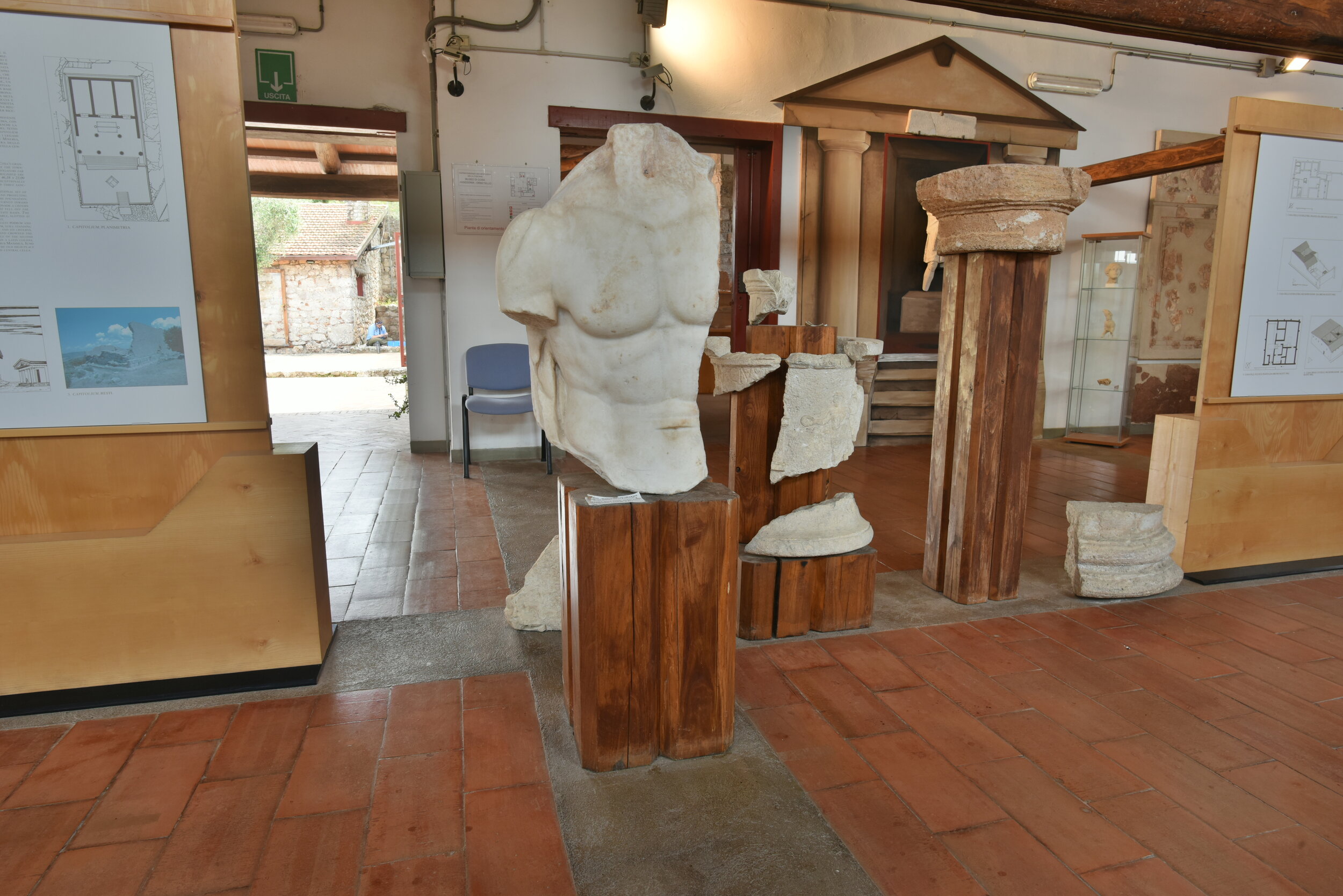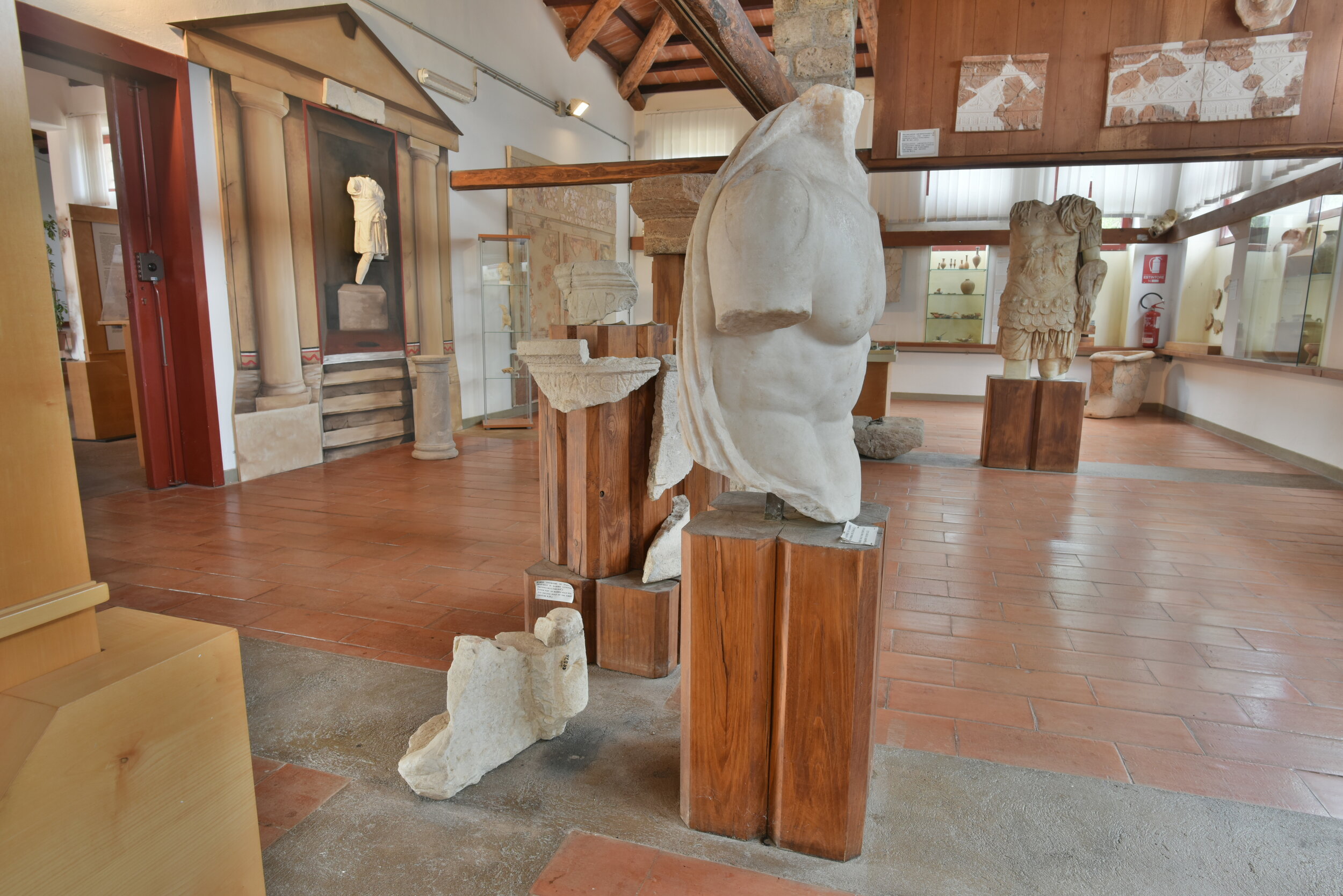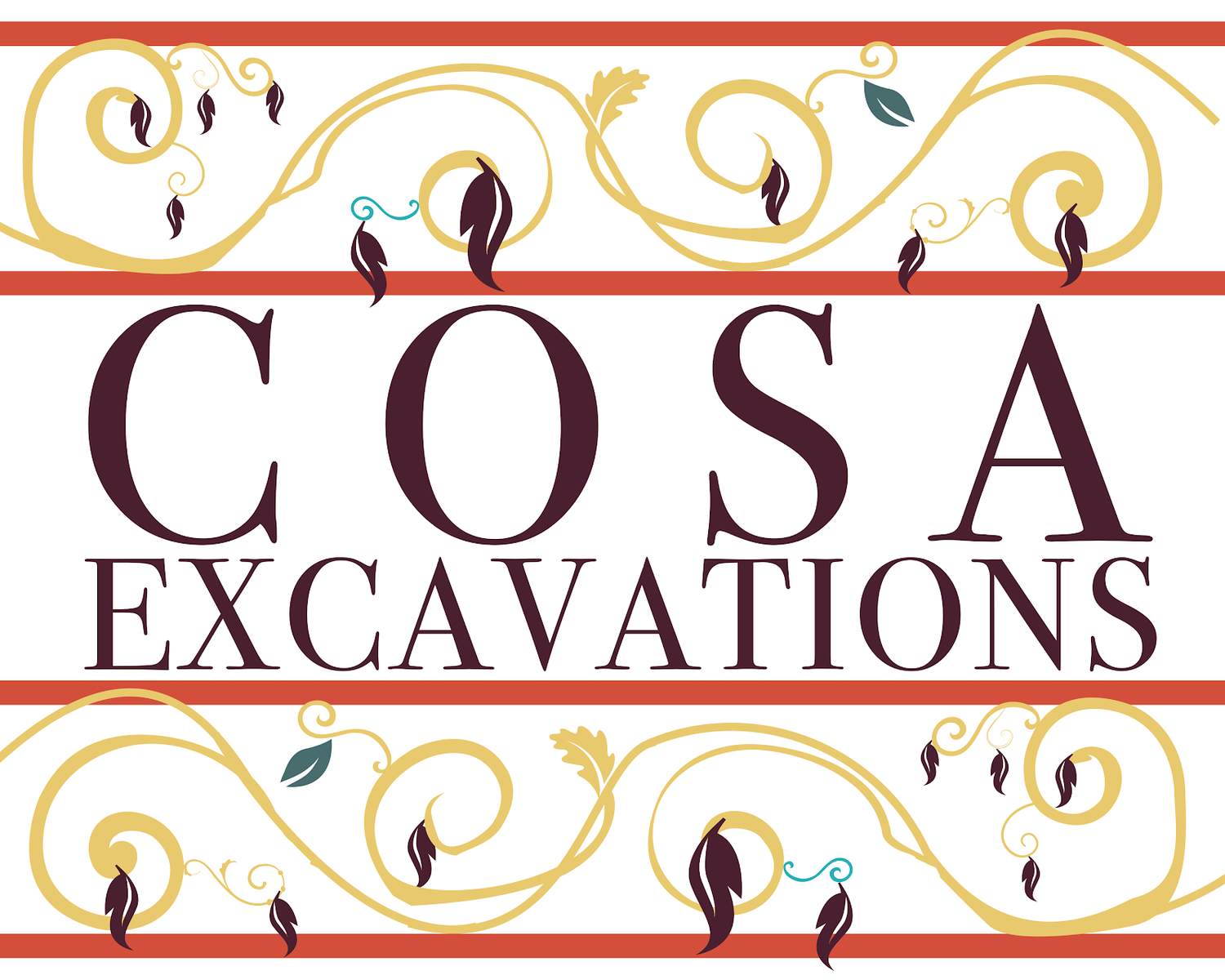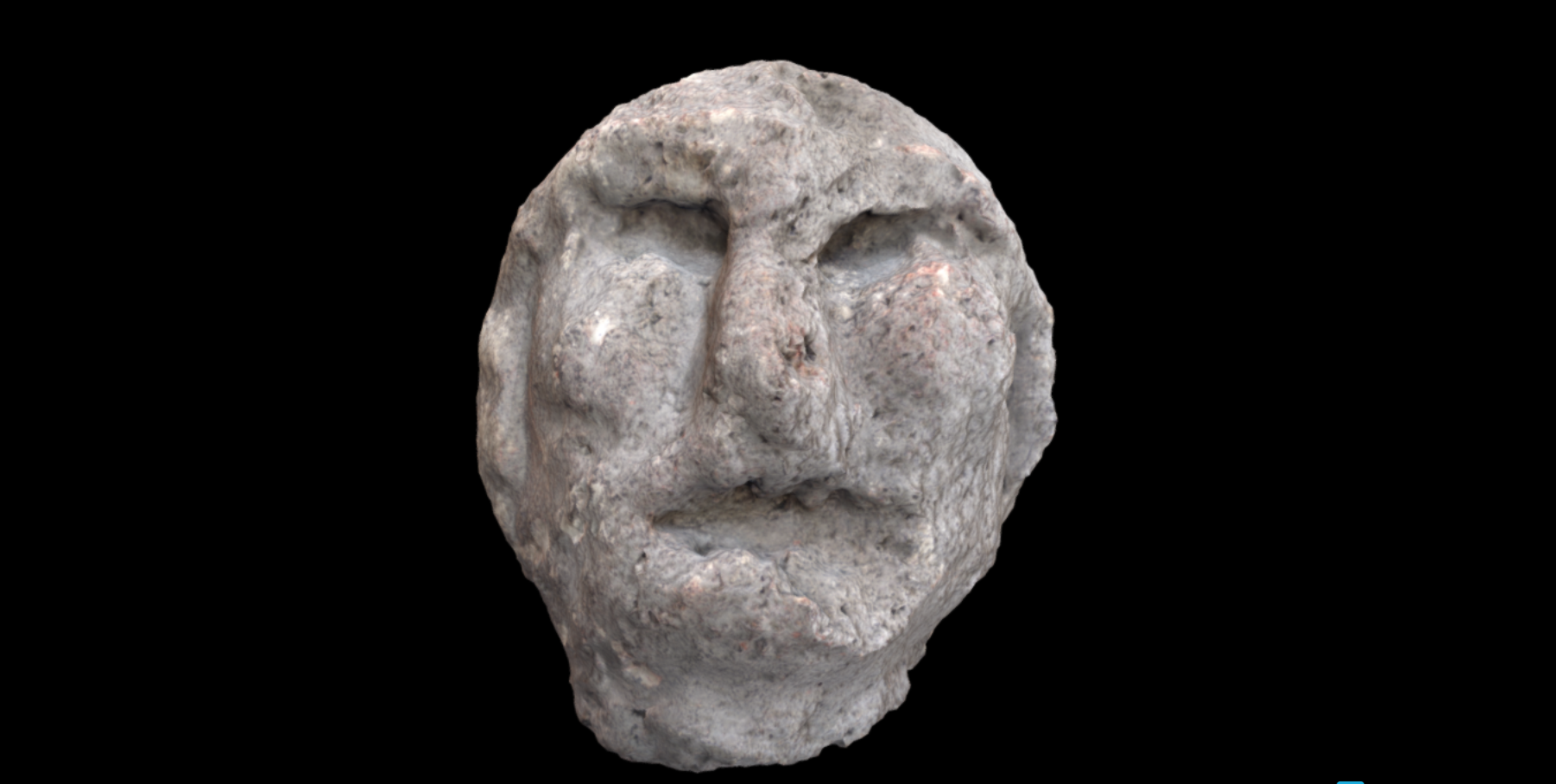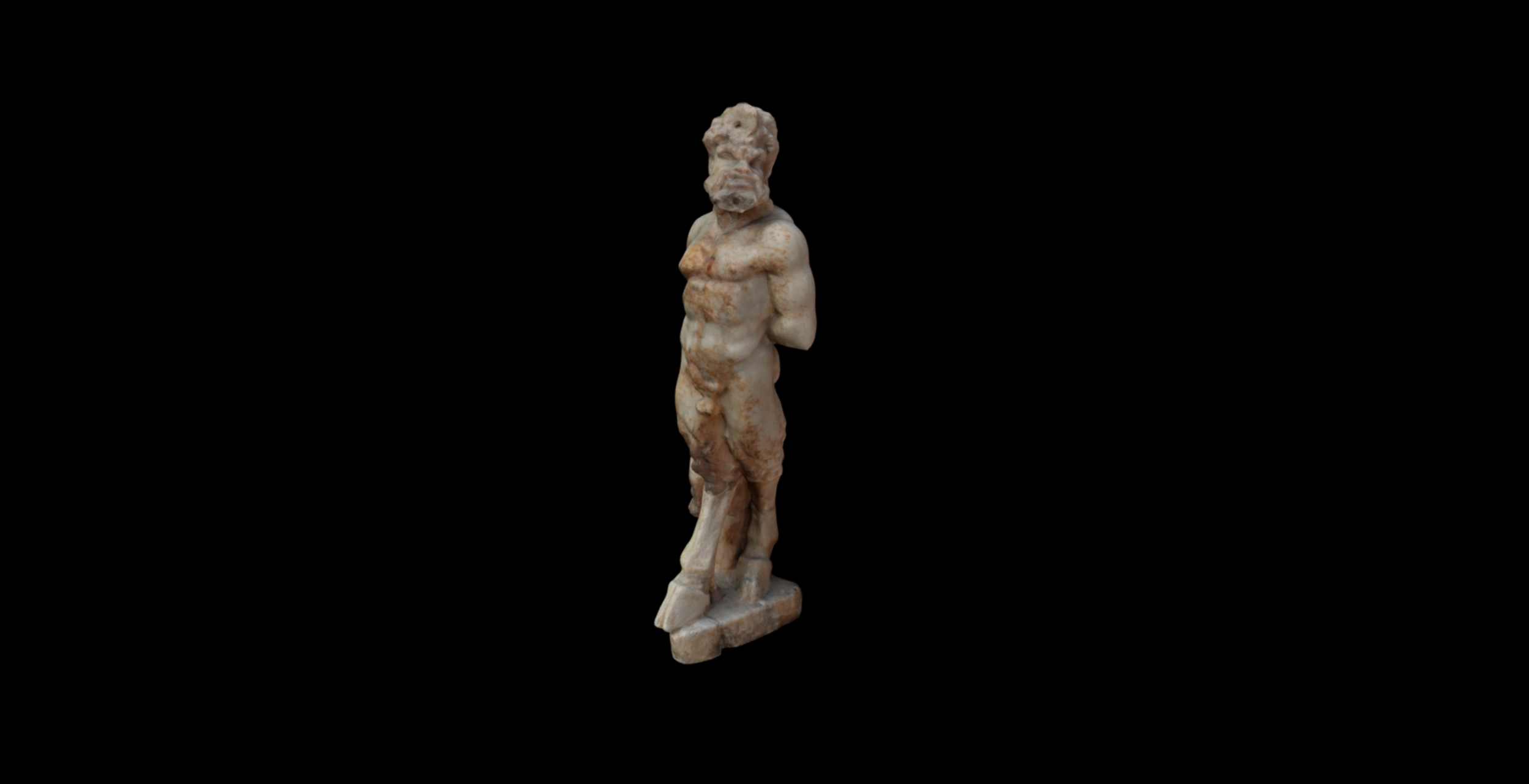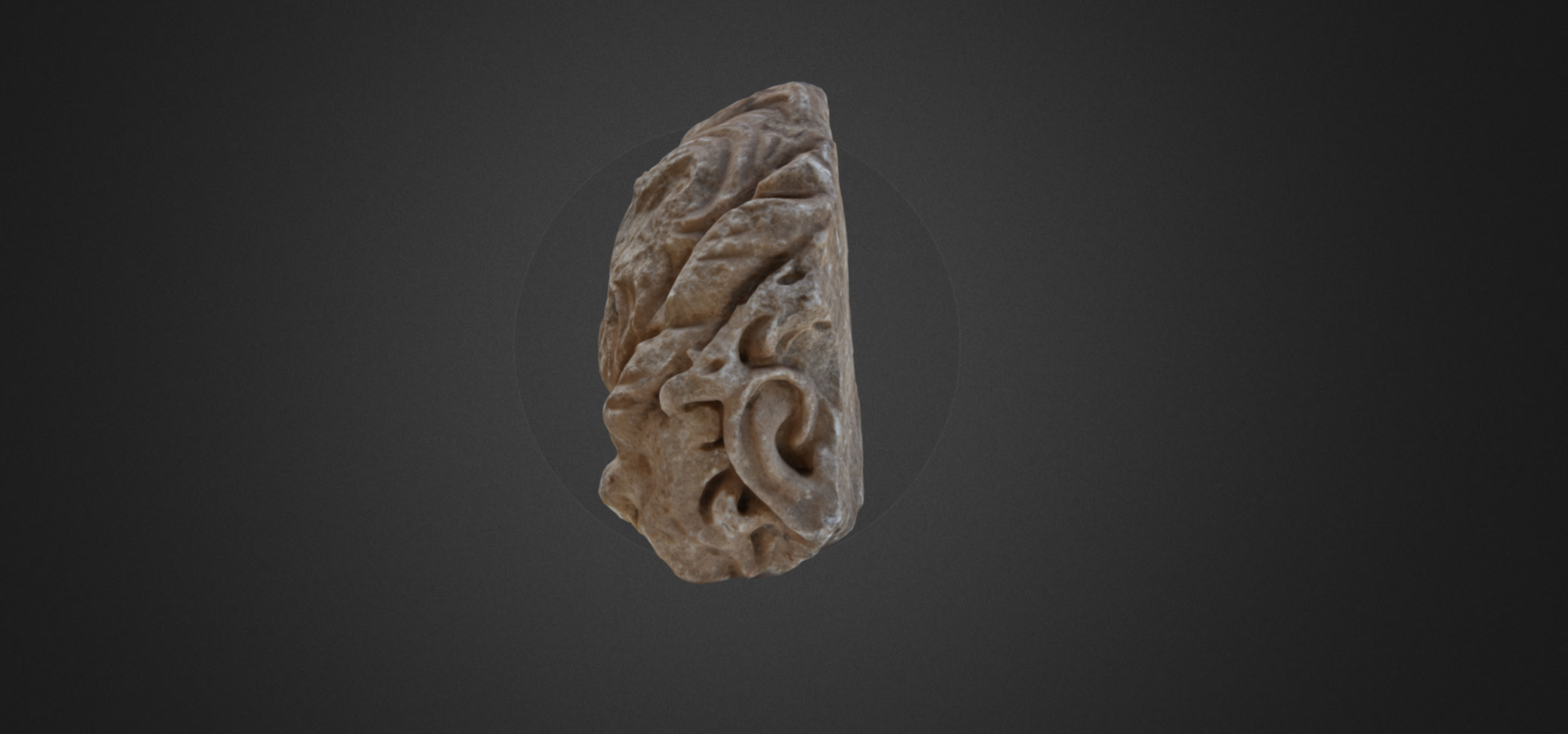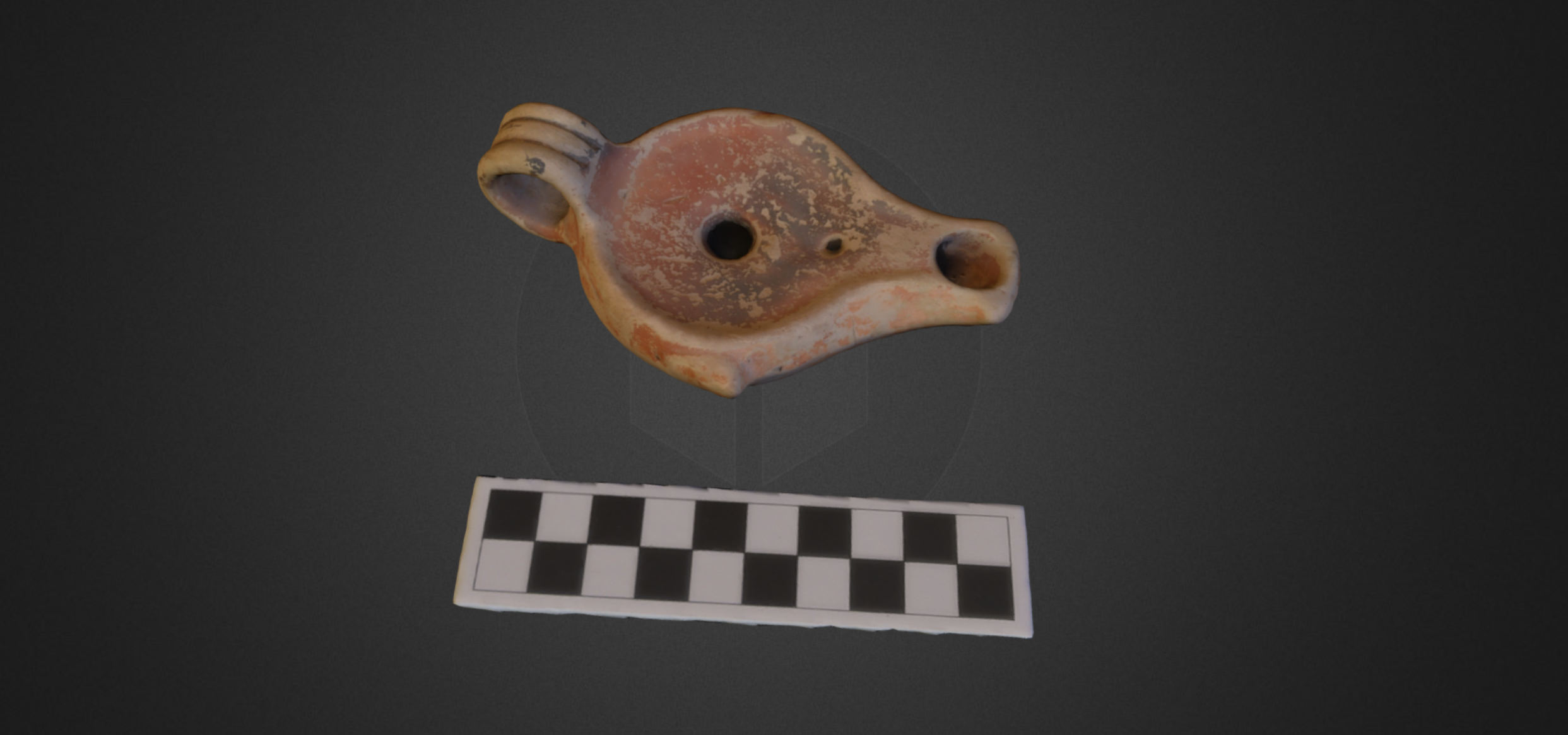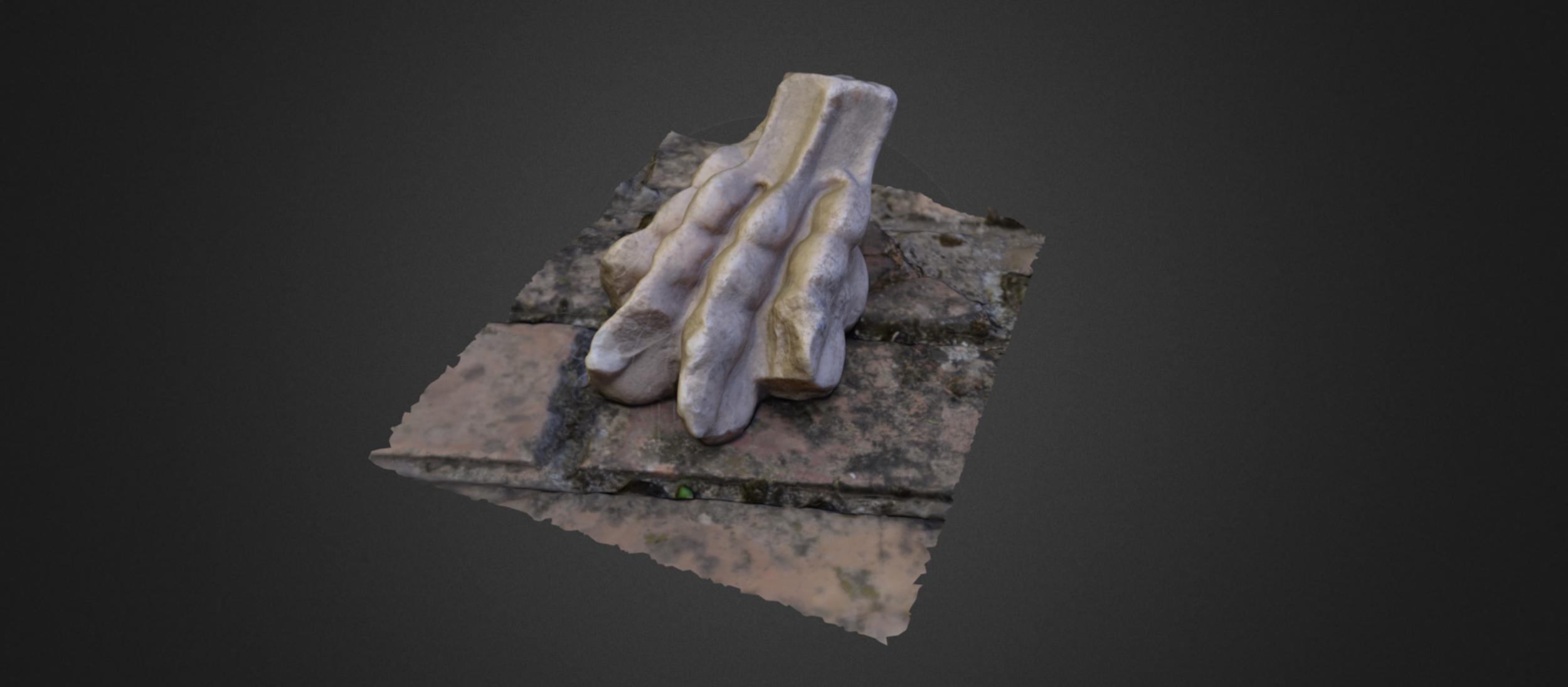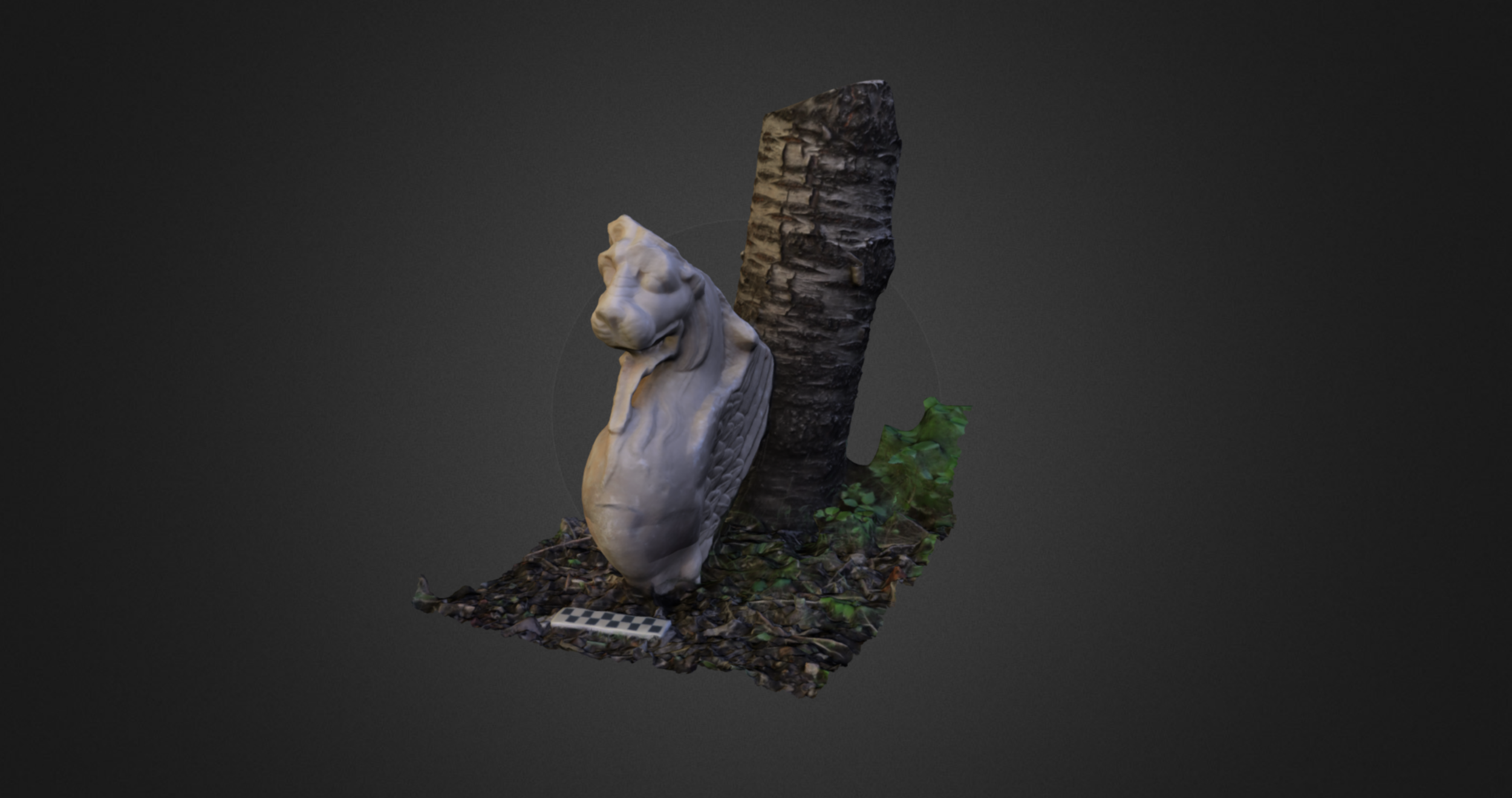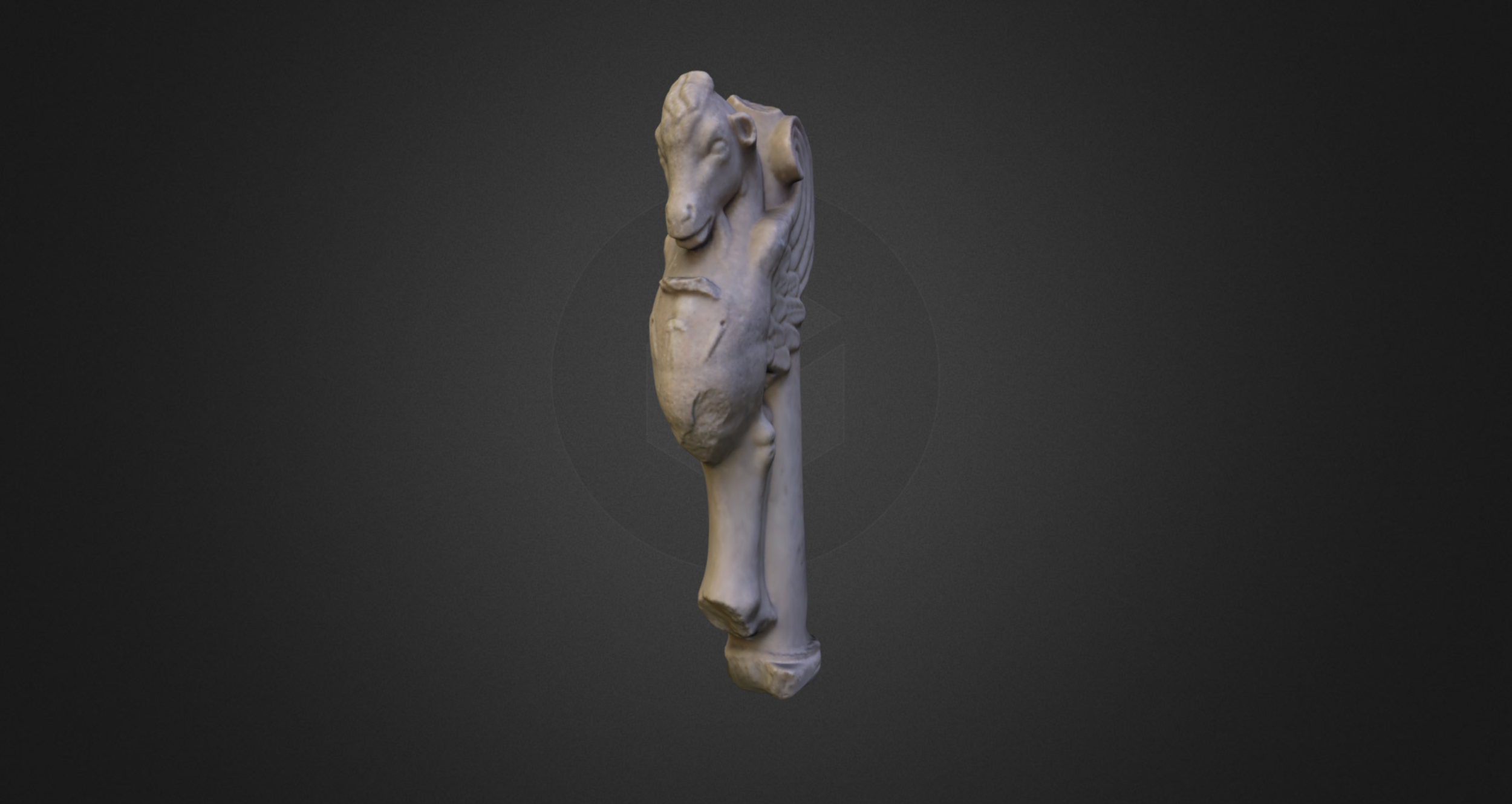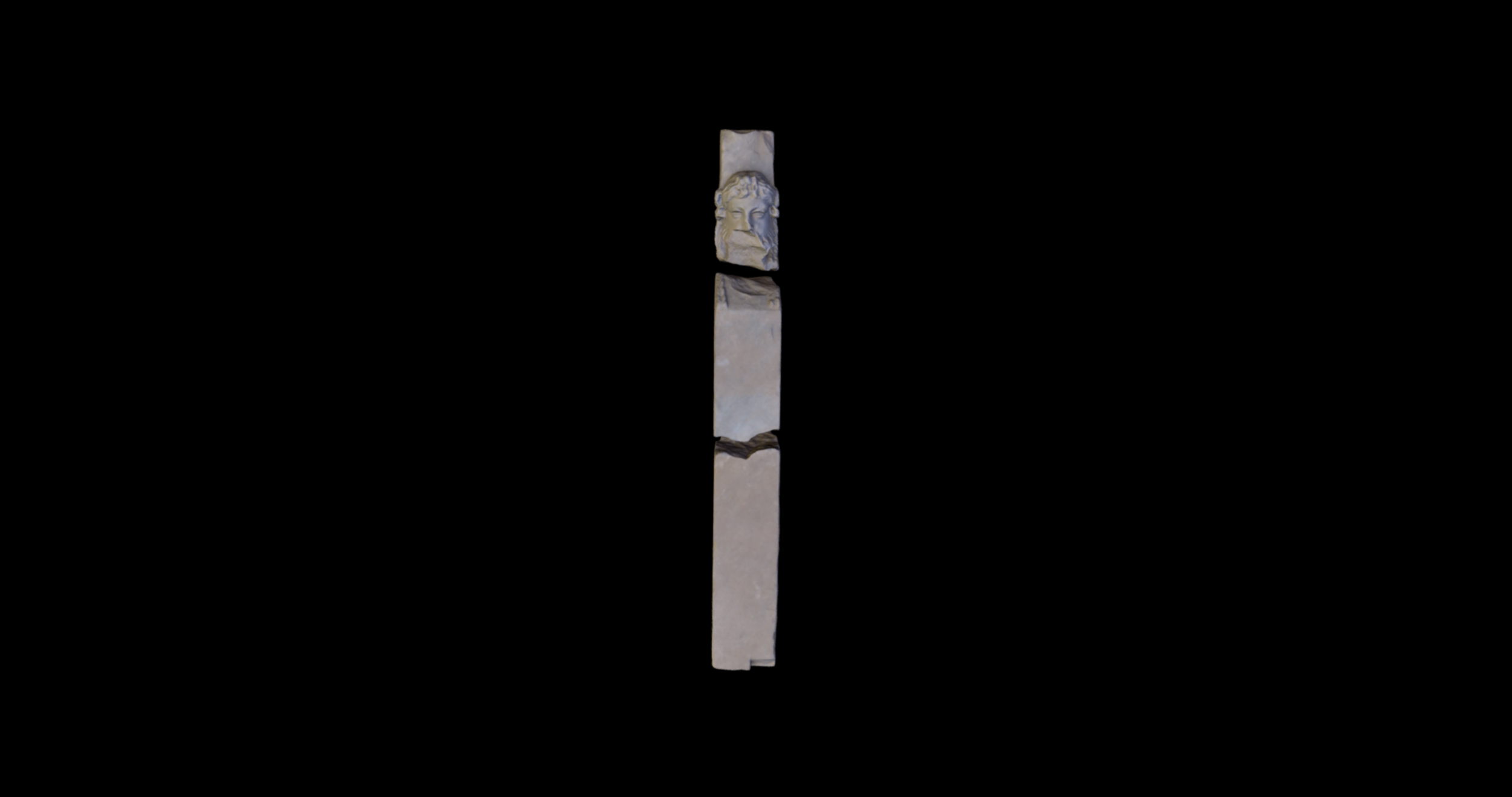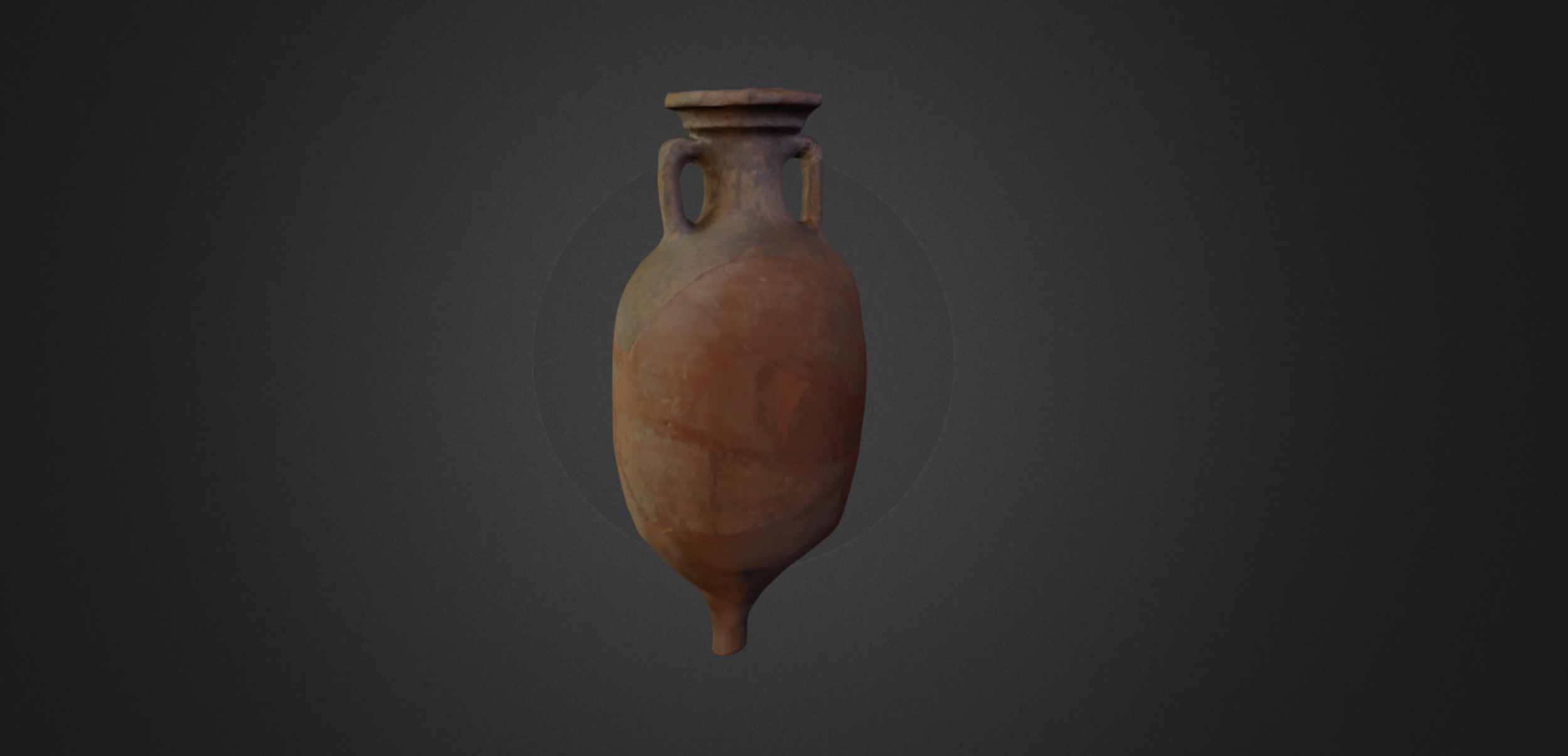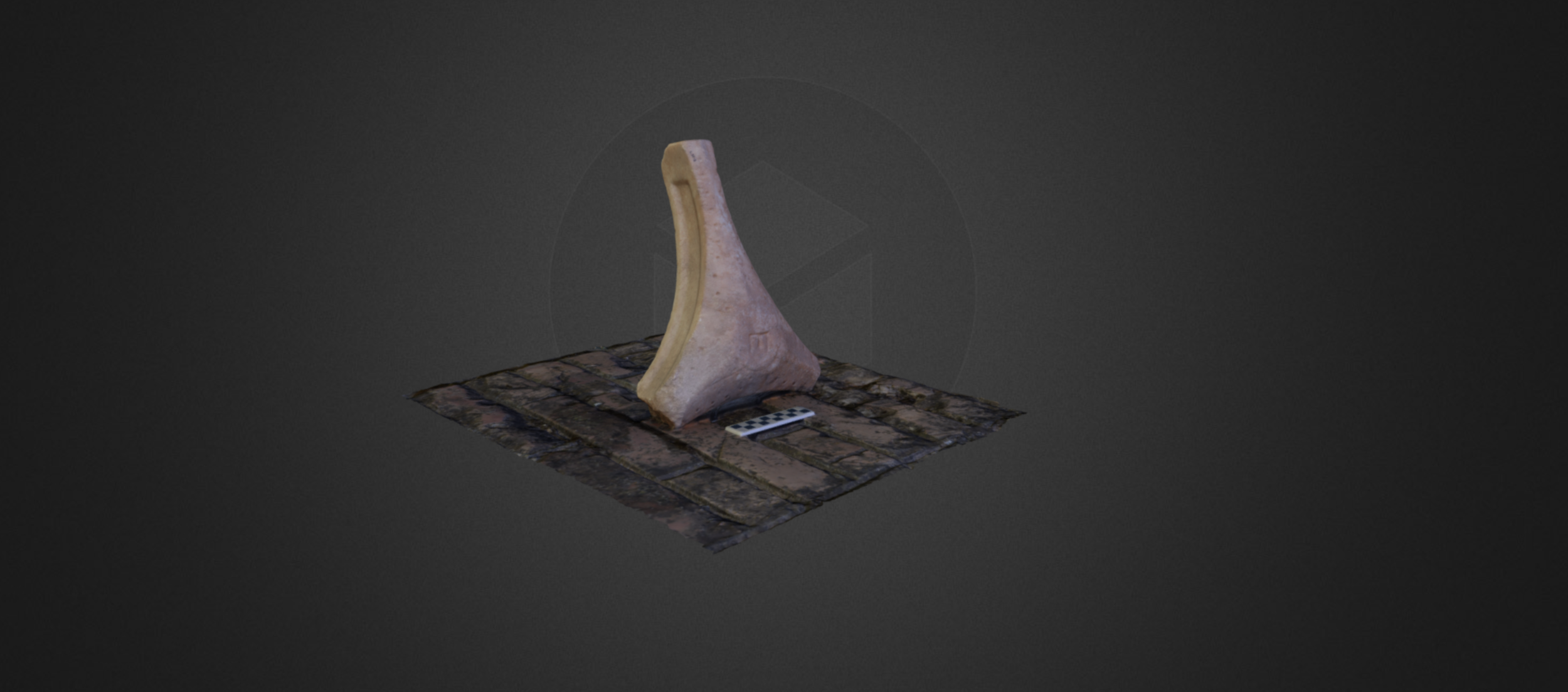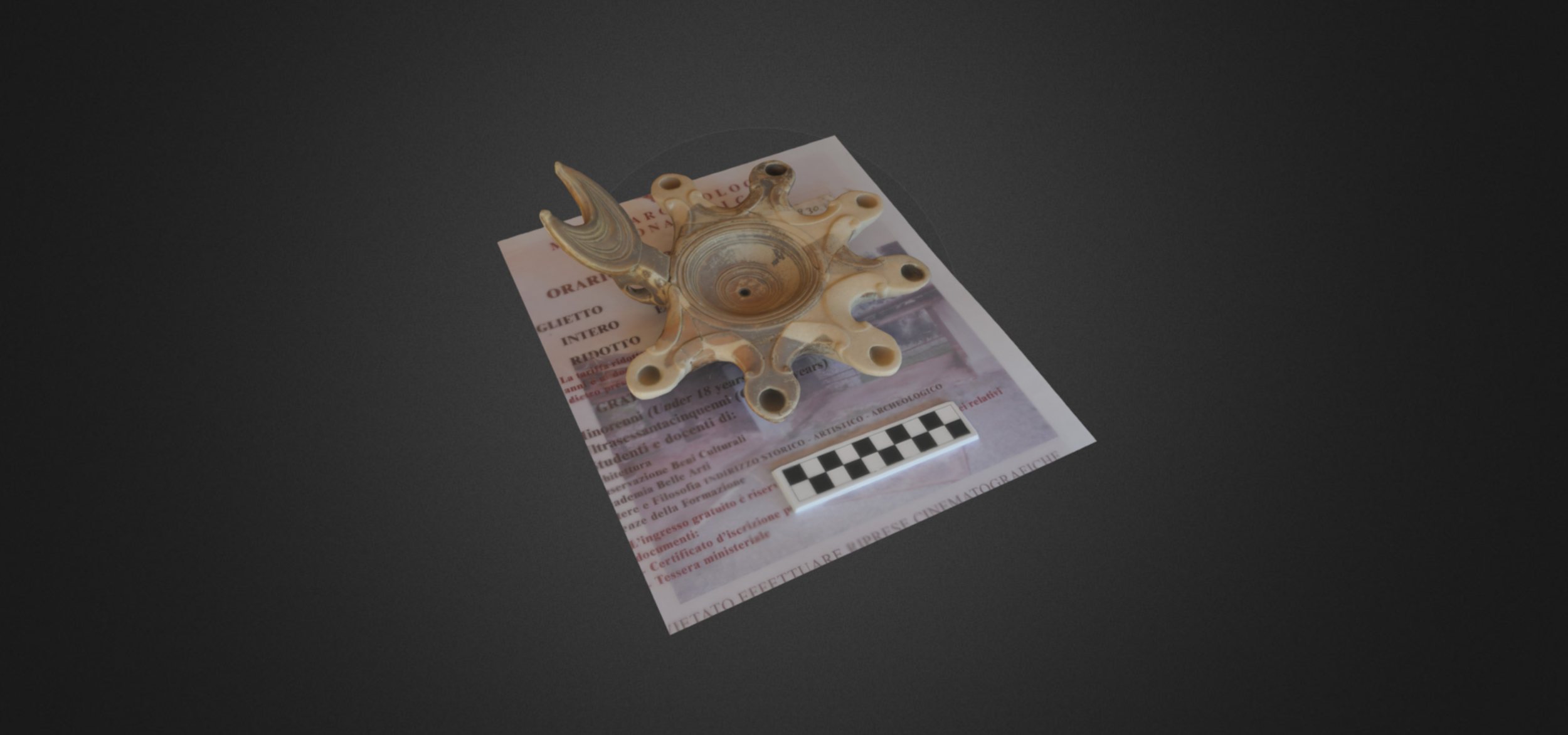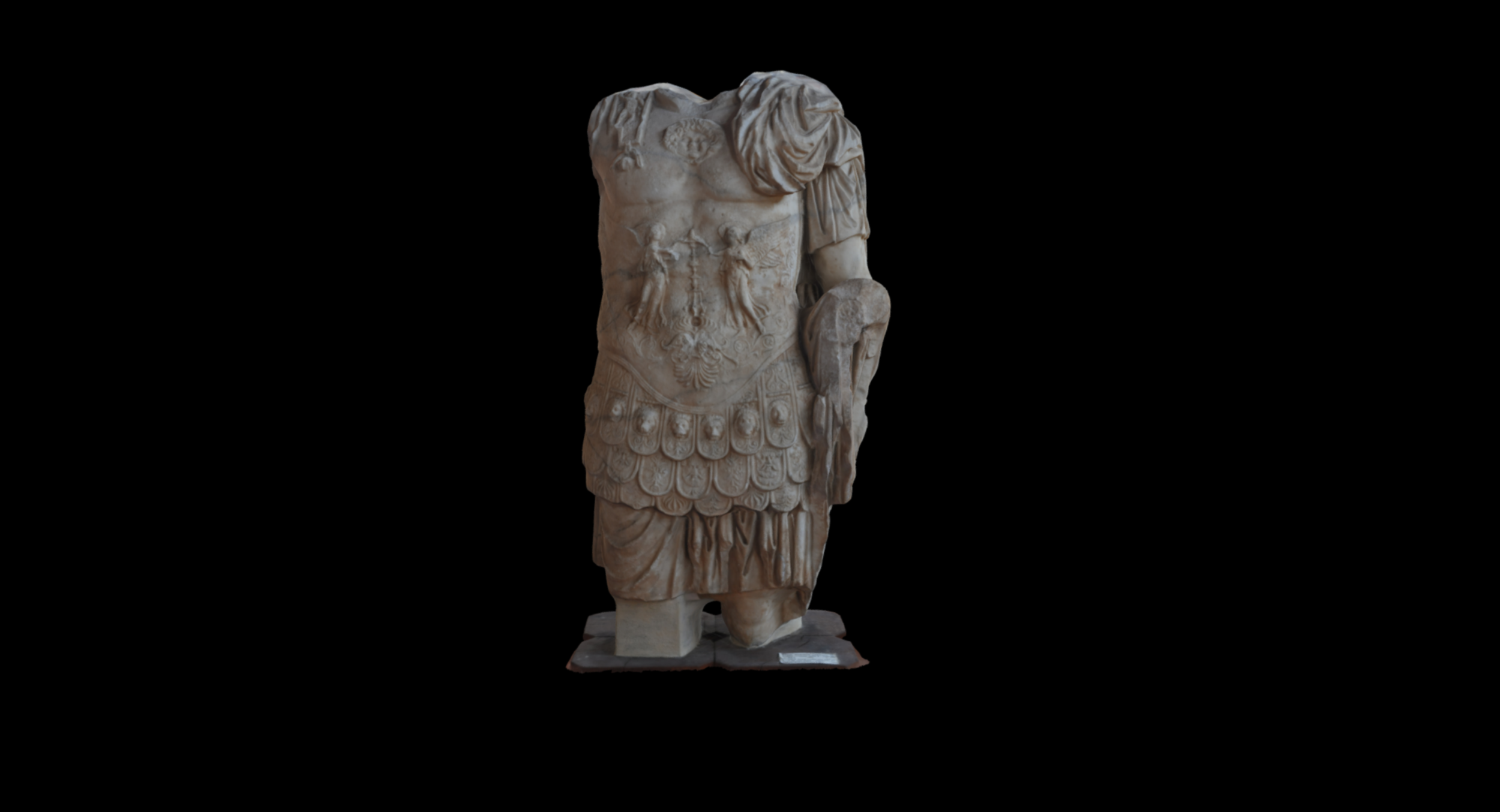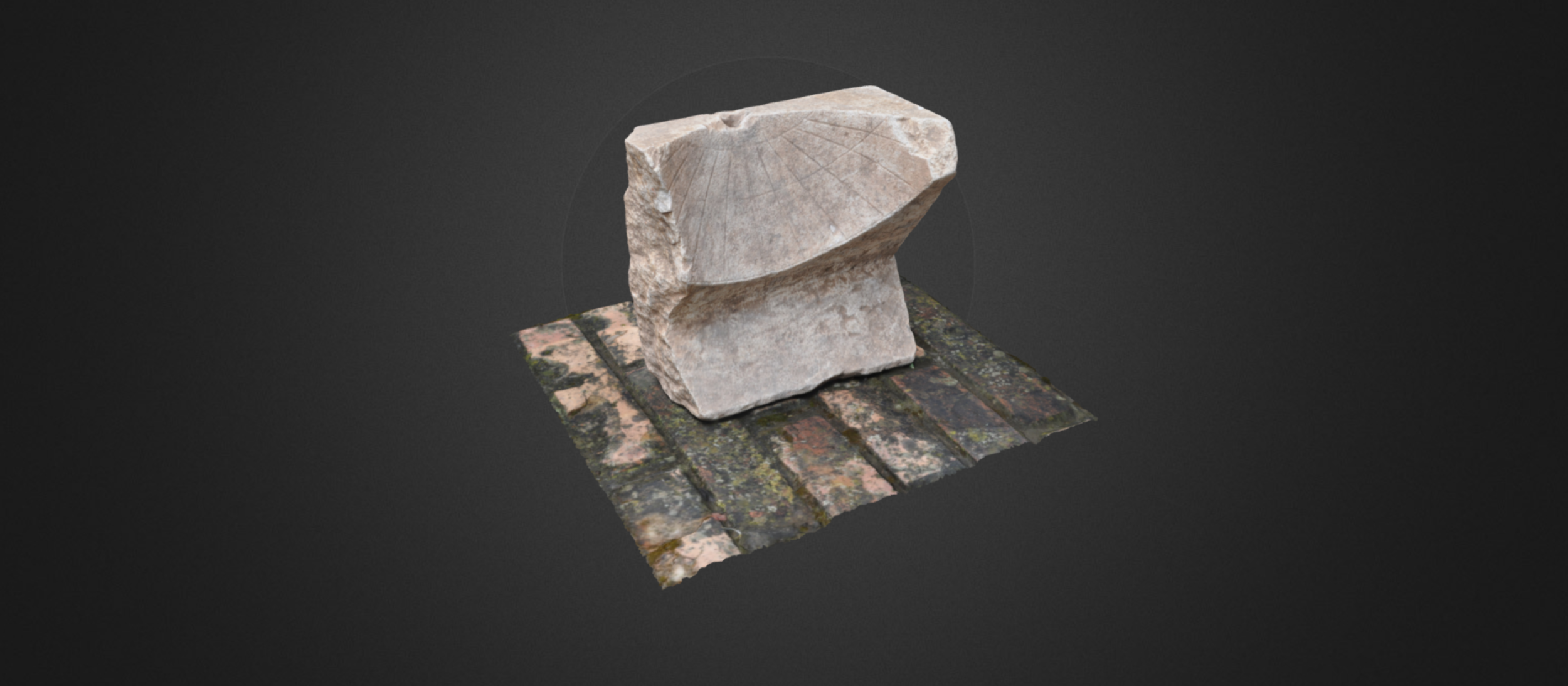Site Structures
Reservoir, Cuniculus, and Baths
The 2015 archaeological dig at the Ancient Roman colony of Cosa continued exploration of the site’s Bath Complex.
Because the ancient city had no springs, and no apparent way of getting a steady supply of fresh water other than by collecting rainfall, the role of reservoirs, cisterns, and holding tanks cannot be underestimated.
Shown here are the 2015 trenches at the bath complex, and the large reservoir, situated directly across the ancient street, now hidden under soil.
The large reservoir is connected to a cistern by a cuniculus, which runs under the street, and would have channeled collected water to a “water tower” at the bath complex, from which fresh water could be drawn as needed.
In the 3D model at right, click the numbered annotations or use the arrows at the bottom of the window to take a guided tour of the reservoir, cuniculus, and cistern.
Images Gallery of Artifacts
3-D Images of Artifacts
SCULPTURE
The "Cosa Faun"
This statuette is a faun in the pose of Marsyas, the follower of Dionysus who challenged Apollo to a music contest and, upon losing, was flayed alive for his hubris. Here, the faun's hands are bound behind his back. Because of the "in the round" nature of the sculpture, it was likely displayed in a space where viewers could move around it to take in the various details on every side.
This piece is on display in the Cosa Museum.
Cuirassed Torso
This sculpture of a figure wearing a muscle cuirass is on display in the Cosa Museum. In Hellenistic and Roman times, male musculature was idealized in the form of torso-protecting armor. This cuirass is embellished with a gorgon head just below the neck, and two winged victories with a candelabrum.
Find information, catalogue information, and metadata coming soon!
Herm Table Leg
A table leg in the form of a herm. The head of this table leg was on display in the Cosa museum, and the two fragments of the shaft were in storage bins. During the 2014 season, Jackie Collins-Clinton noted that the breaks on the two fragments matched, and that the braids on the neck fragment matched the head on display in the museum. Matthew Brennan scanned the fragments and digitally reconstructed the table leg.
Find information, catalogue information, and metadata coming soon!
Pegasus Table Leg
This beautiful white marble table leg in the form of a winged horse is from the previous excavations, and was found during an inventory of the white marble sculpture in storage during the 2014 season.
Find information, catalogue information, and metadata coming soon!
Winged Lion Table Leg
This table leg carved in the form of a winged lion is from the previous excavations at Cosa, and was in the storerooms.
Find information, catalogue information, and metadata coming soon!
Some Small Finds
Cosa Museum Interior
Get a full perspective view of the physical museum at Cosa Excavations!
